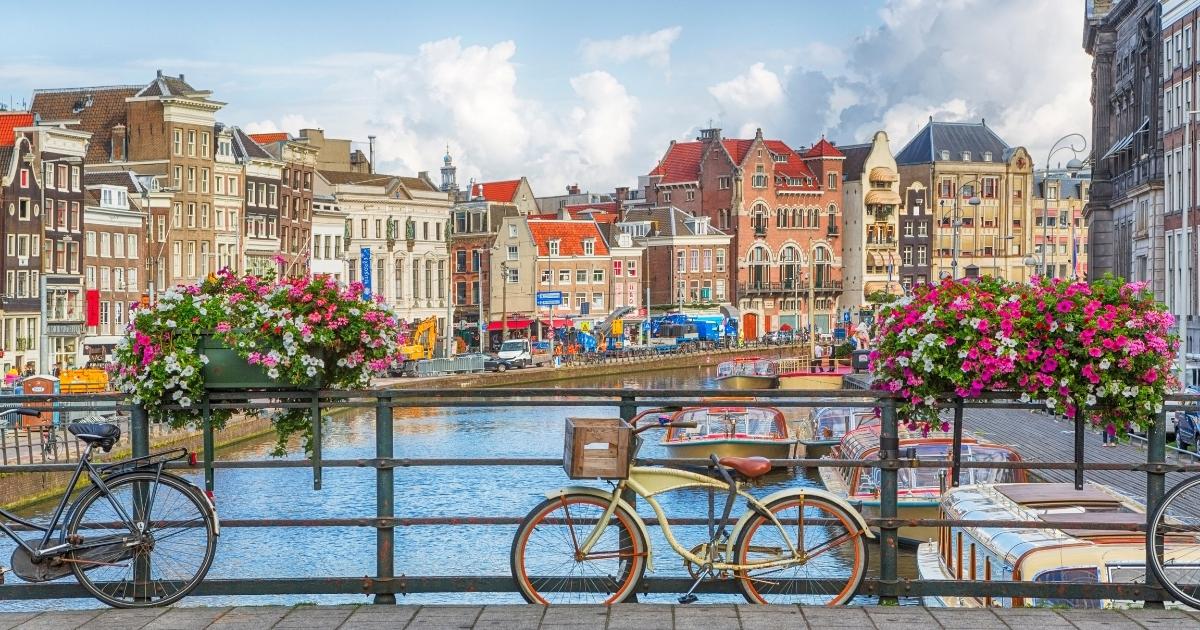Amsterdam, the capital of the Netherlands, is a city that enchants millions of visitors each year with its unique blend of rich history, dynamic culture, and modern Amsterdam innovation. Nestled among a network of canals and bridges, this city has long been a center for trade, art, and progress. While it is widely known for its picturesque architecture, liberal values, and vibrant social scene, Amsterdam also offers much more—stories of resilience, deep-rooted traditions, and forward-thinking development that continue to shape its identity in the global arena.
Historical Significance: From a Modest Fishing Village to a Global Powerhouse

Amsterdam’s origins can be traced back to the late 12th century when it was little more than a fishing village on the banks of the Amstel River. It was during the Dutch Golden Age in the 17th century that Amsterdam blossomed into one of the wealthiest cities in the world. The establishment of the Dutch East India Company (VOC) in 1602 played a pivotal role in transforming Amsterdam into a powerful trading hub. Ships carrying spices, textiles, and exotic goods from the East navigated the waters of the city’s harbor, cementing its place as a central player in international commerce.
The city’s wealth and power during this period are reflected in its architecture. As merchants grew richer, grand canal houses were built along the city’s Amsterdam waterways, creating the iconic ring of canals known as the “Grachtengordel” (Canal Belt), a UNESCO World Heritage site today. These houses, with their ornate gables and narrow facades, remain an enduring symbol of Amsterdam’s prosperity during the 17th century.
However, the city’s history is also marked by moments of hardship. During World War II, Amsterdam was occupied by Nazi Germany, and the city became a focal point of Jewish persecution. The story of Anne Frank, whose diary chronicled her time in hiding during the Nazi occupation, serves as a somber reminder of this period. Today, the Anne Frank House stands as a museum, drawing visitors from around the world who come to pay their respects and learn about the atrocities of the Holocaust.
Cultural Richness: Art, Museums, and More

Amsterdam’s cultural wealth extends far beyond its historical significance. The city is home to some of the most renowned art collections in the world. The Rijksmuseum, housing works by Dutch masters such as Rembrandt, Vermeer, and Frans Hals, offers visitors a glimpse into the Netherlands’ artistic legacy. Rembrandt’s “Night Watch” is perhaps the museum’s most famous piece, drawing crowds daily. The Van Gogh Museum, another cultural landmark, is dedicated to the life and work of Vincent van Gogh, one of the most influential artists in history. His vibrant, emotionally charged works have left an indelible mark on the art world, and the museum provides an intimate look at his tumultuous life.
The city is also home to contemporary art galleries and modern museums, such as the Stedelijk Museum, which focuses on modern and contemporary art and design. Whether you’re interested in the old masters or cutting-edge installations, Amsterdam’s art scene offers something for everyone.
Music, too, plays a significant role in the city’s cultural life. The Concertgebouw, one of the world’s most famous concert halls, hosts performances by the Royal Concertgebouw Orchestra, considered one of the finest orchestras globally. Additionally, Amsterdam’s vibrant nightlife and music festivals reflect its reputation as a city that embraces both the traditional and the modern.
The Spirit of Innovation: Sustainability and Technology

While Amsterdam is steeped in history and culture, it is also a city at the forefront of innovation, particularly when it comes to sustainability. The Dutch have long been recognized for their expertise in water management, and Amsterdam is a prime example of a city that has learned to live harmoniously with water. Its intricate canal system, while historically designed for transportation and defense, now plays a crucial role in managing rising water levels caused by climate change.
The city’s commitment to sustainability is evident in its green initiatives. Amsterdam has been a leader in promoting cycling as a primary mode of transportation, with an estimated 900,000 bicycles in the city—more than the population itself. The extensive network of bike lanes makes it easy and safe to cycle through the city, reducing reliance on cars Amsterdam and lowering carbon emissions.
Moreover, Amsterdam is a hub for green technology and startups focused on sustainable solutions. Initiatives such as Circular Amsterdam aim to transform the city into a circular economy, where waste is minimized, and resources are reused as much as possible. From eco-friendly urban planning to energy-efficient buildings, the city is working toward becoming one of Europe’s most sustainable metropolises.
In addition to sustainability, Amsterdam is a thriving center for technology and innovation. The city has a vibrant startup ecosystem, particularly in the fields of fintech, AI, and blockchain technology. Tech hubs like Amsterdam Science Park and The Edge, one of the world’s greenest and smartest office buildings, attract entrepreneurs and innovators from around the world. Amsterdam’s focus on fostering an inclusive, forward-thinking business environment makes it an ideal location for creative minds looking to push boundaries.
Liberal Values and Progressive Politics

Amsterdam’s liberal values have long been a hallmark of its identity. It was one of the first cities in the world to legalize same-sex marriage in 2001, and its relaxed stance on cannabis use, reflected in the city’s famous “coffeeshops,” has drawn much attention and debate over the years. The city’s Red Light District, a centuries-old neighborhood known for its legalized prostitution, is another manifestation of Amsterdam’s progressive approach to social issues. While some view it as controversial, others see it as an example of the city’s commitment to individual freedom and harm reduction.
The city’s liberal attitude also extends to its policies on social equality, education, and healthcare. Amsterdam is known for being inclusive, welcoming people from all walks of life. This cosmopolitan spirit is reflected in the city’s diverse population, with over 180 nationalities calling Amsterdam home. The result is a city that is not only tolerant but also vibrant, multicultural, and constantly evolving.
A Thriving Tourism Industry

Tourism is a major part of Amsterdam’s economy, with millions of visitors flocking to the city each year. From the famous Keukenhof Gardens in spring to the lively King’s Day celebrations, there is always something to see or do. Amsterdam’s narrow streets, canals, and vibrant neighborhoods like Jordaan or De Pijp are perfect for exploring on foot or by bicycle.
However, the growing influx of tourists has presented challenges for the city, particularly in managing overcrowding in popular areas like Dam Square and the Museumplein. In response, the city has implemented measures to promote sustainable tourism and encourage visitors to explore lesser-known areas of the city.
Conclusion
Amsterdam is a city that thrives on its contrasts—a place where the old and the new, the traditional and the progressive, coexist harmoniously. Its canals, museums, and historic landmarks tell the story of a city shaped by centuries of trade, art, and innovation, while its commitment to sustainability and progressive values show that Amsterdam is also looking to the future. Whether you’re a history buff, an art lover, or a tech enthusiast, Amsterdam offers an experience that is both enriching and unforgettable.
